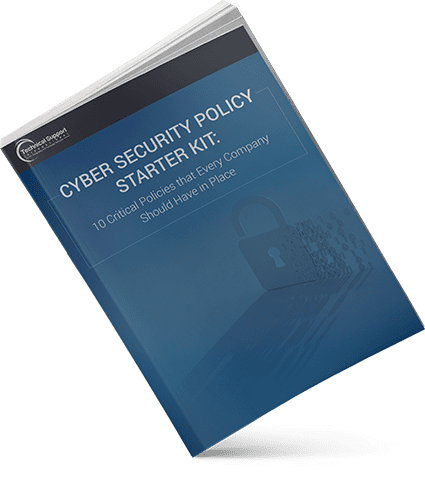Blog

The Future of Engineering: How AI Trends & Cybersecurity Are Defining the Industry
As someone who spends a lot of time working with technology leaders in the engineering industry, I’ve seen the state of IT in this field up close and personal. I’ve witnessed the types of issues that people are facing on a regular basis, and how catastrophic they can become if left unchecked.
But I’ve also seen an incredible amount of potential as innovative and disruptive new technologies emerge on a regular basis. I’ve seen clients get incredibly excited about how far we’ve come and where it’s all headed to the point where I can’t help but get excited myself.
Of course, no discussion of the state of engineering company IT would be complete without discussing where it intersects with another critical topic: cybersecurity. Make no mistake about it, it absolutely does. In order to unlock as many of the benefits of these top engineering company IT trends with as few of the potential downsides as possible, cybersecurity needs to become a top priority at firms of all sizes moving forward.
Where Innovation and Security Intersect
One of the more prevalent IT trends within the engineering industry that has made a big impact over the last few years – and that is poised to make an even bigger one in 2021 – has to do with AI-driven autonomy and automation. In the past five years alone, we’ve seen artificial intelligence used to optimize CAD designs to best fit the functional definition of a part being engineered. Robotic process automation can help make sure that actual human employees are spending less time on menial tasks like standardizing parts or auditing change orders so that they can focus on those tasks that really need them.
Of course, artificial intelligence in this context is only going to get smarter, faster and more accurate as we move into 2021. Thanks to the near ubiquitous nature of the Internet of Things being applied within engineering firm environments, it’s never been easier to collect and utilize real-time information. As 5G networks continue to roll out in most areas of the country over the next year, engineering firms are going to be able to do things in real-time that they can’t even fathom right now.
Does your engineering firm need to be able to optimize how essential pieces of equipment are being utilized, or monitor performance to accurately forecast maintenance shutdowns? Not only are you about to be able to do it better than ever before, but you’ll also be able to do it over a standard wireless network.
The danger for engineering firms, however, comes by way of what happens if something goes wrong. All of these advancements are made possible thanks to interconnected systems that are all creating and sharing high value data with one another at all times. The more that data is “worth,” the more likely it is to become a target for someone like a hacker with malicious intentions.
Consider the fact that, according to a report from IBM and the Ponemon Institute, the average cost of a data breach in 2020 was $3.86 million. While that was a modest decline of 1.5% from just a year earlier in 2019, it’s still an enormous 10% rise over the last five years alone.
This is why one has to consider cybersecurity with equal weight when compared to the types of IT advancements that are positioned to drive significant growth within the industry. Everything you’ve worked so hard to achieve and that you’ve invested so heavily in can all come crashing down at a moment’s notice if you think you can have one without the other.
Case in point: another recent study indicated that roughly 95% of all successful cyber-attacks still begin with a simple phishing scam. In that situation, your deployment of the Internet of Things didn’t fail – the end users who were trained to proactively identify these red flags did.
Because of that, you need to invest in things like cybersecurity awareness training with the same energy and enthusiasm that you would in robotic process automation or other AI-driven solutions. If you don’t want your employees to fall victim to a phishing attack, they need to know what one looks like. They need to know what to do if one shows up in their inbox. They need to know how to navigate these threats all within the confines of the important work you need them to do on a daily basis.
In the end, the state of engineering company IT in 2021 is certainly a bright one, indeed – but there is a seedy underbelly to all of this technology that must be addressed as well. The industry as a whole will be more productive, more collaborative and more innovative than ever, but only if firms employ the type of dynamic cybersecurity solutions needed to protect everything at the same time. By putting actionable steps like these in place today, you better prepare yourself for that inevitable day when you DO attract the attention of someone who wants to do you harm.
In no uncertain terms, that day is coming. It will probably be here sooner than you think. You can’t stop it, but you CAN prepare for it – which is a perspective that all engineering firms should adopt as soon as possible.
Get in Touch with TSI
If you have questions or would like to discuss how your engineering company IT can best prepare for cybersecurity threats, please call 508-543-6979 or send us an email. Our team at TSI is here to guide you through the process of protecting your data, employees, and customers.
Categories
- Backup & Disaster Recovery
- Business Operations
- Case Studies
- Cloud Services
- Cyber Security
- Employee Spotlight
- Finance & Budgeting
- Glossary Term
- Governance & IT Compliance
- Managed Services
- Mobile Device Management
- Network Infrastructure
- NIST 800-171 & CMMC 2.0
- PCI
- Podcast
- Project Management
- TSI
- Uncategorized
- vCIO
Cyber Security Policy Starter Kit:
10 Critical Policies That Every Company Should Have in Place


